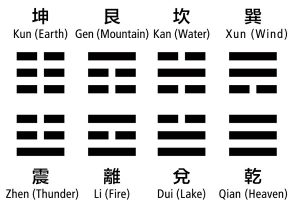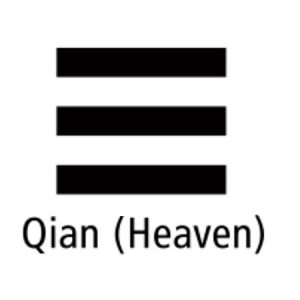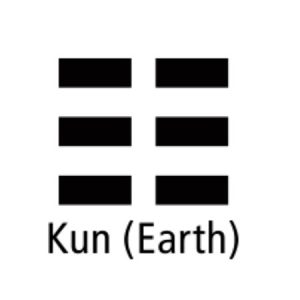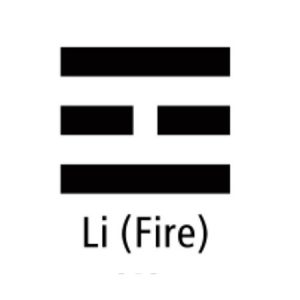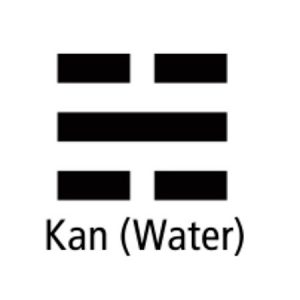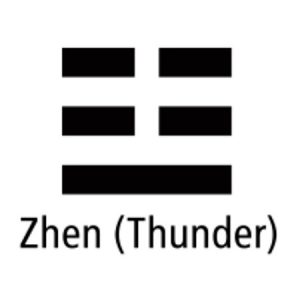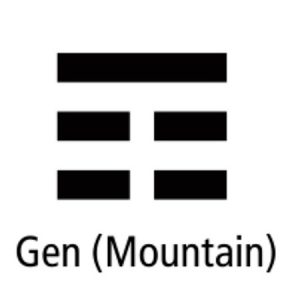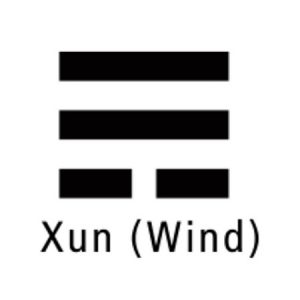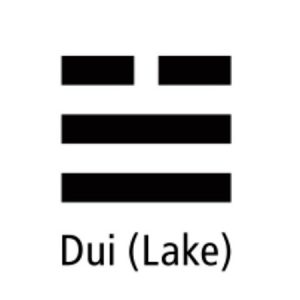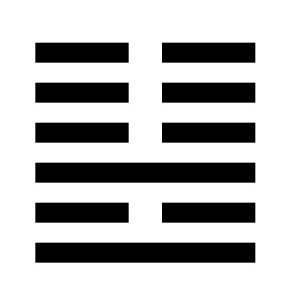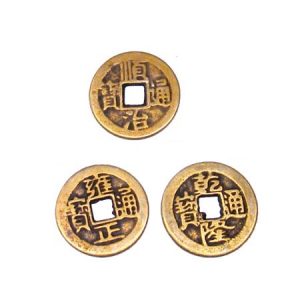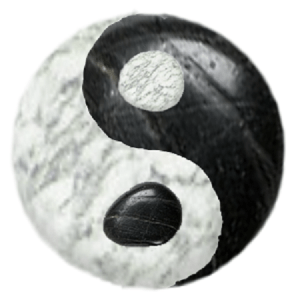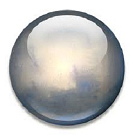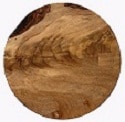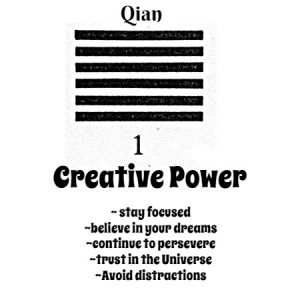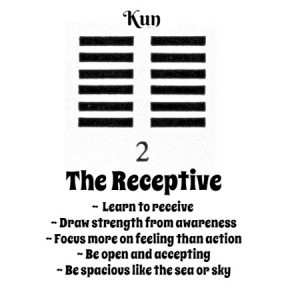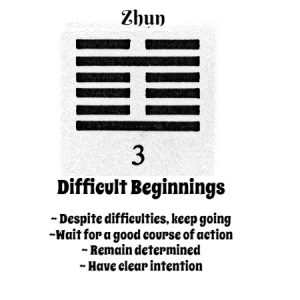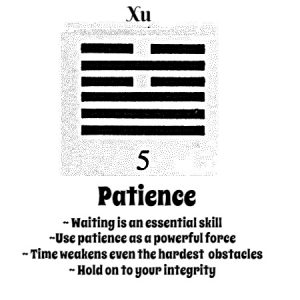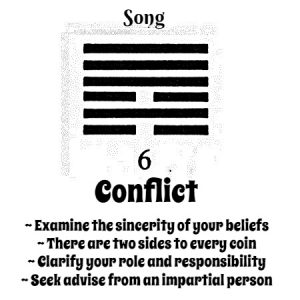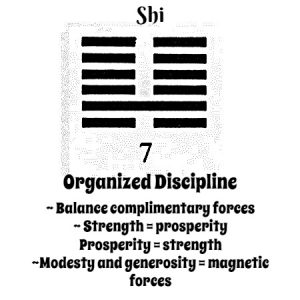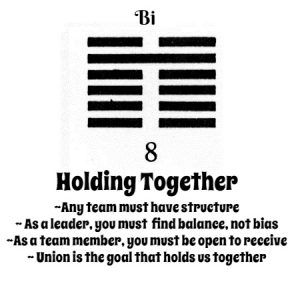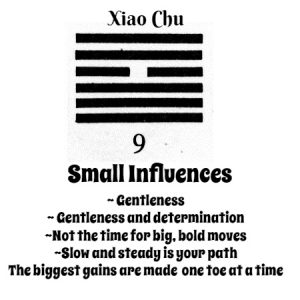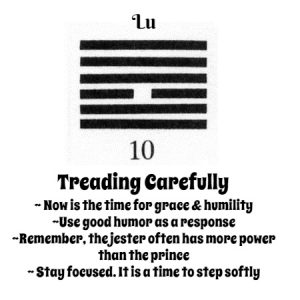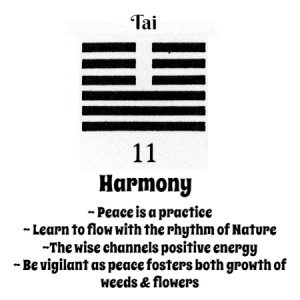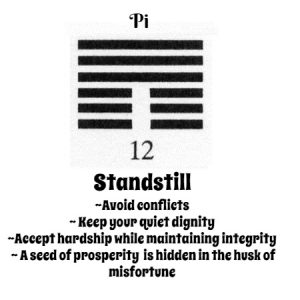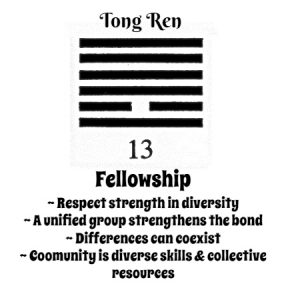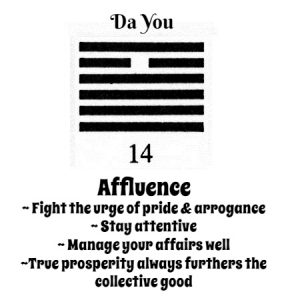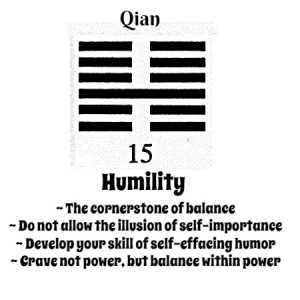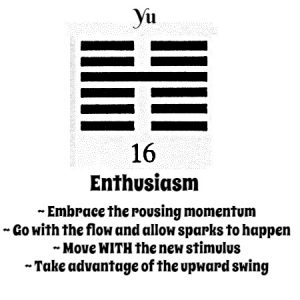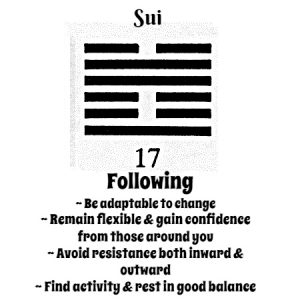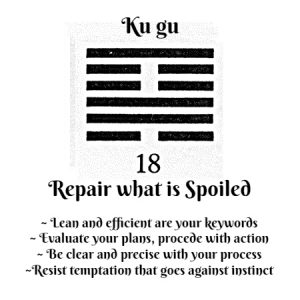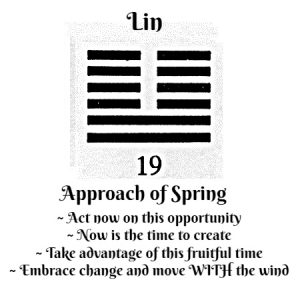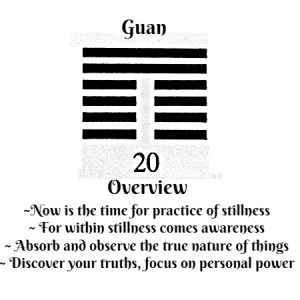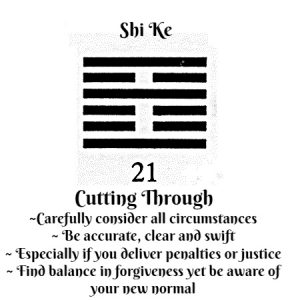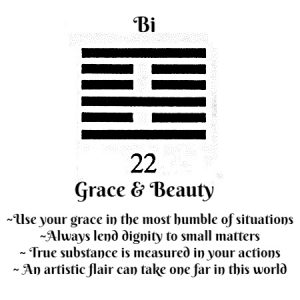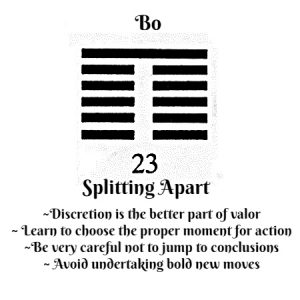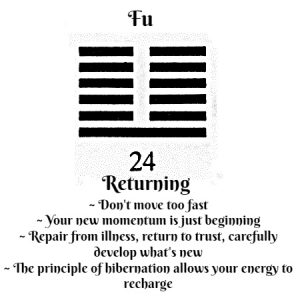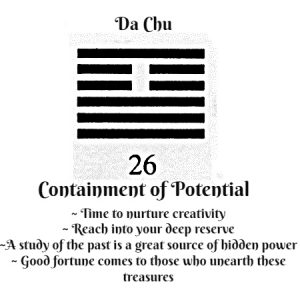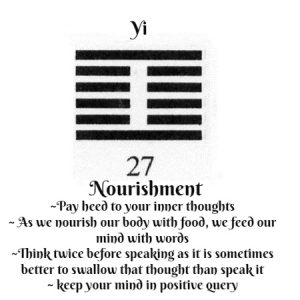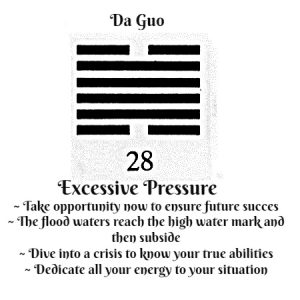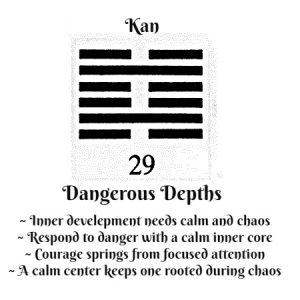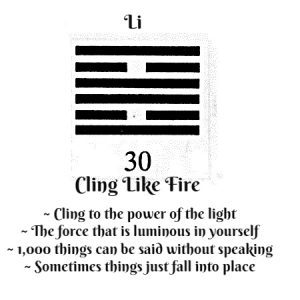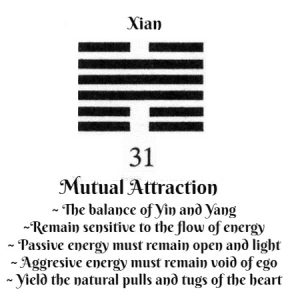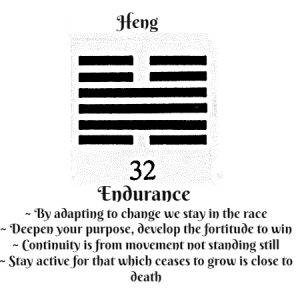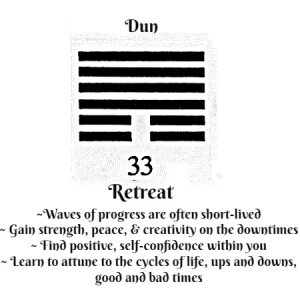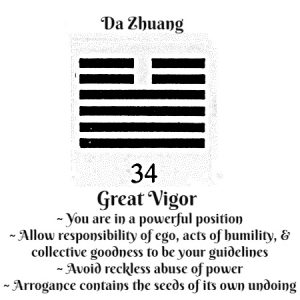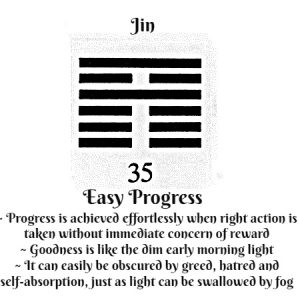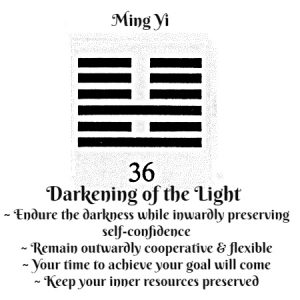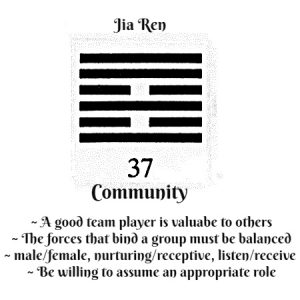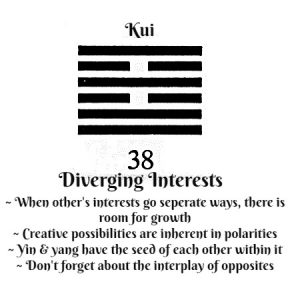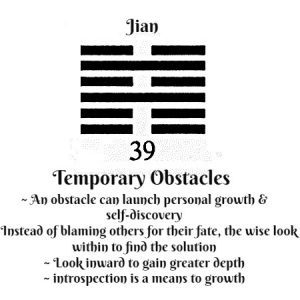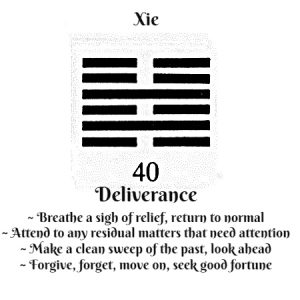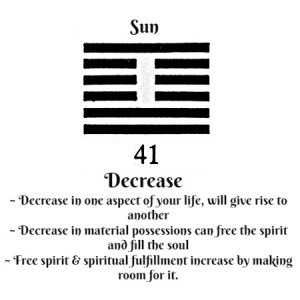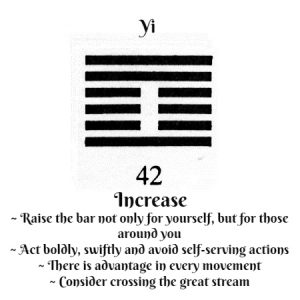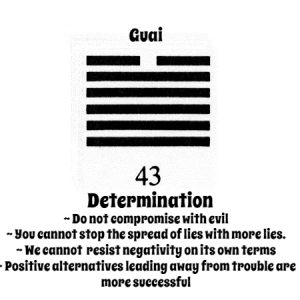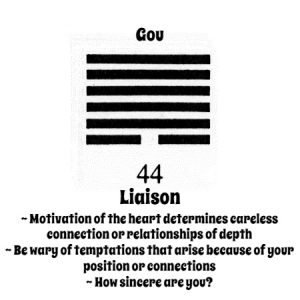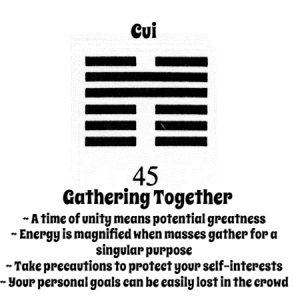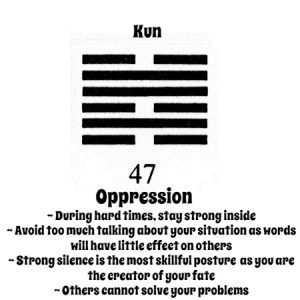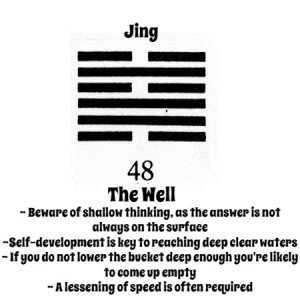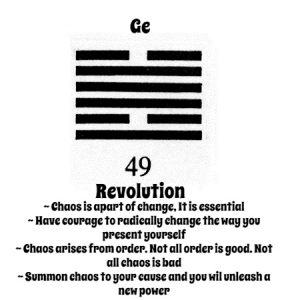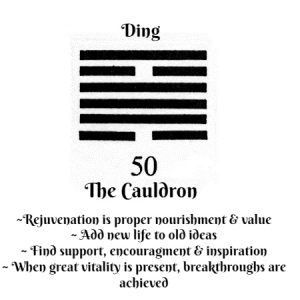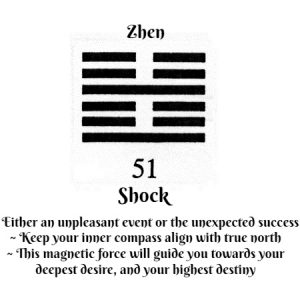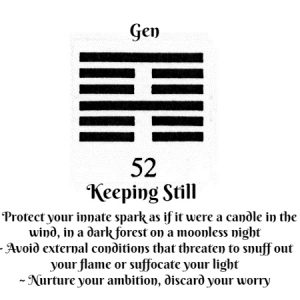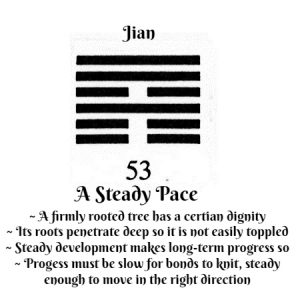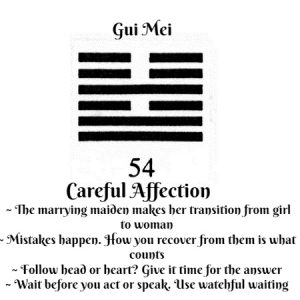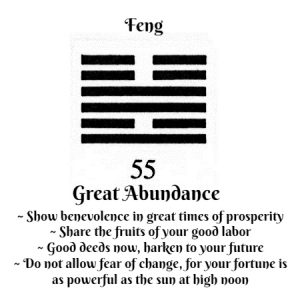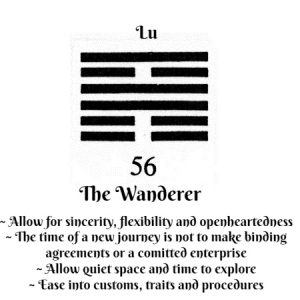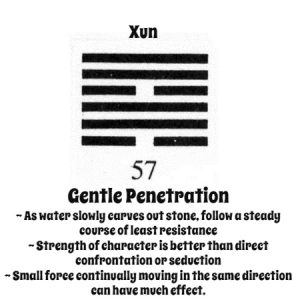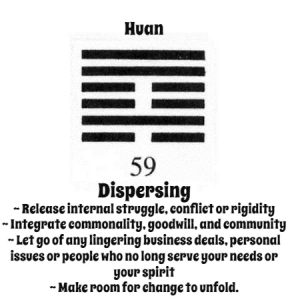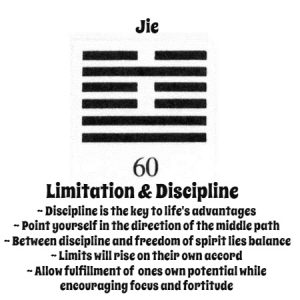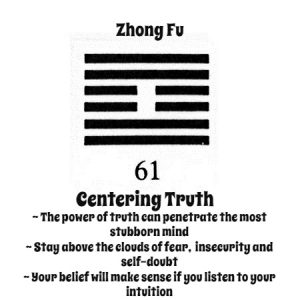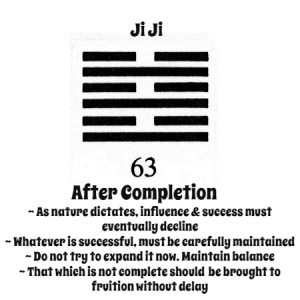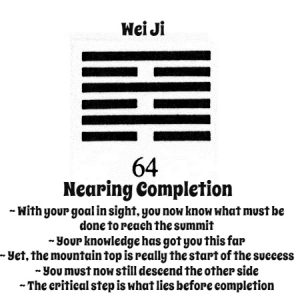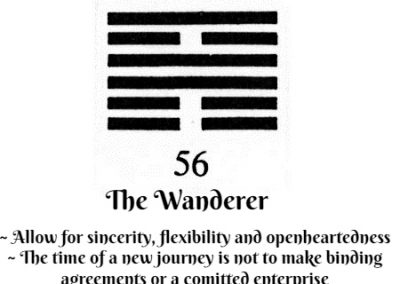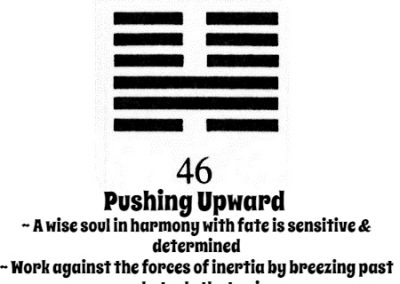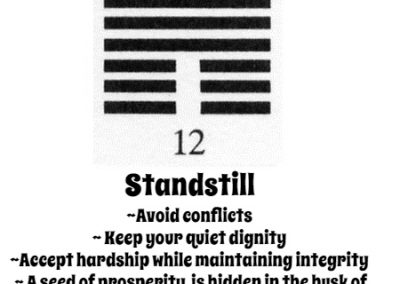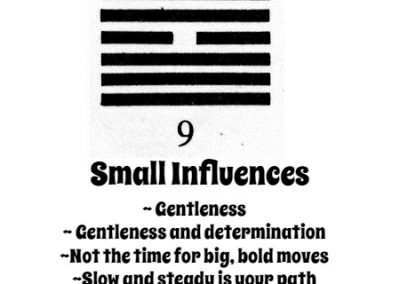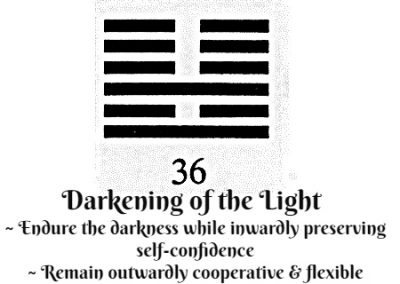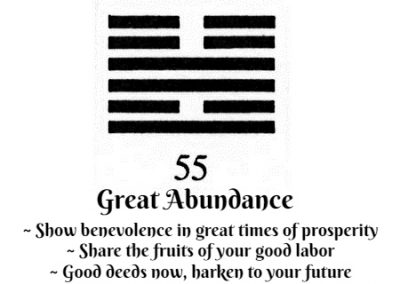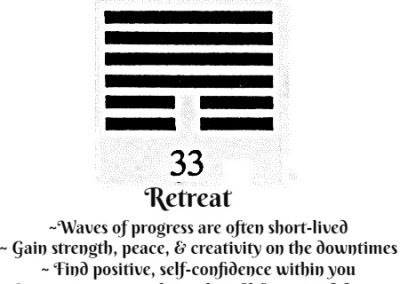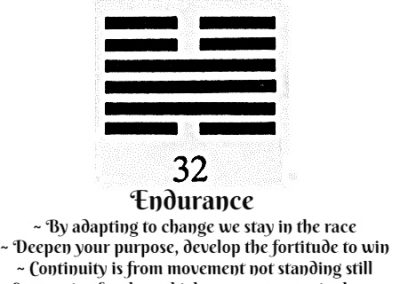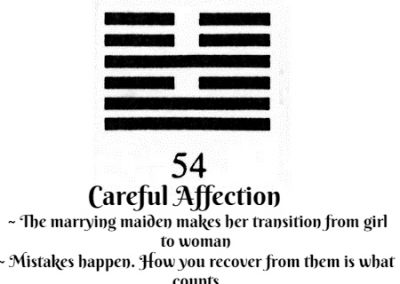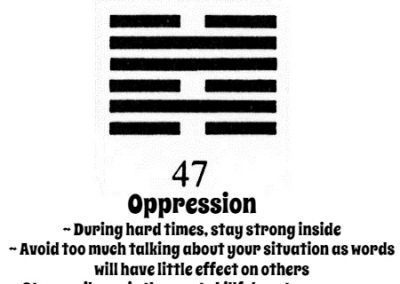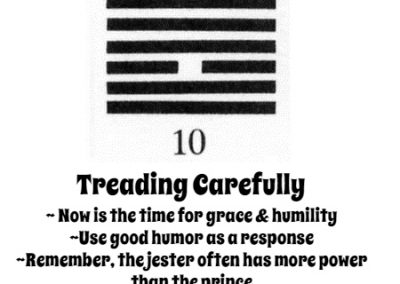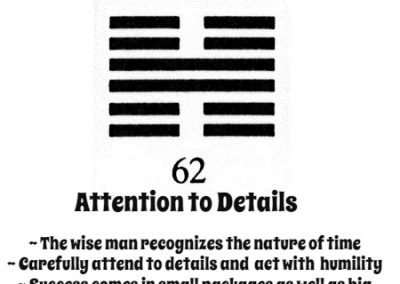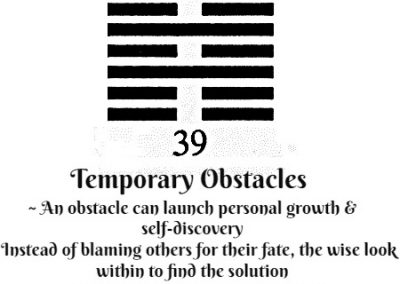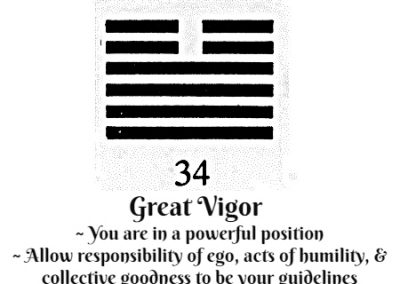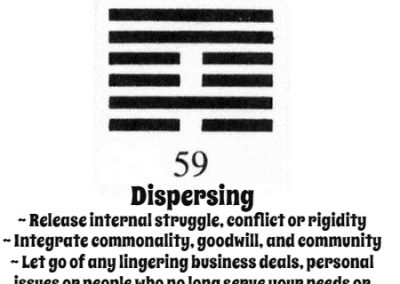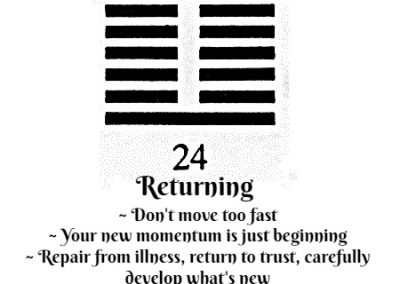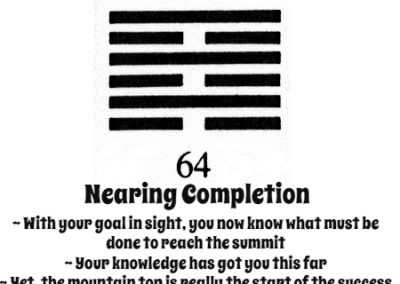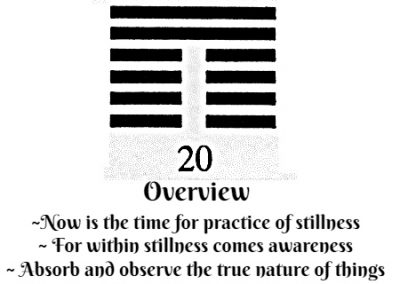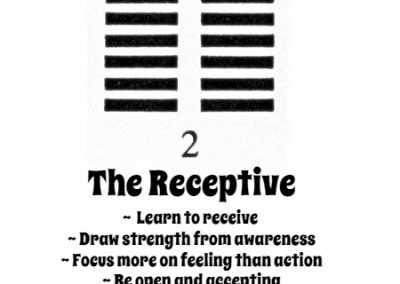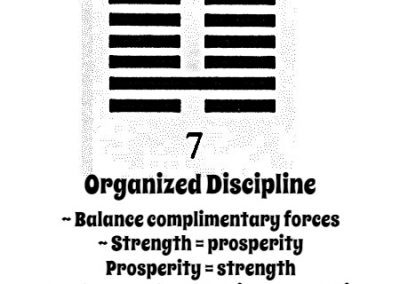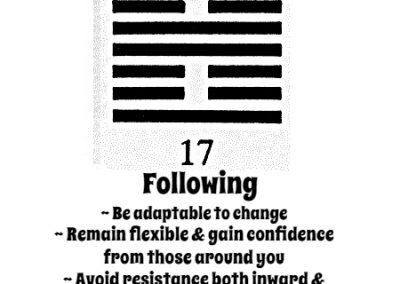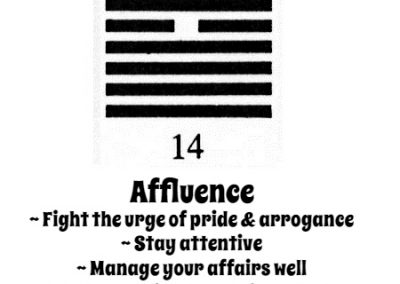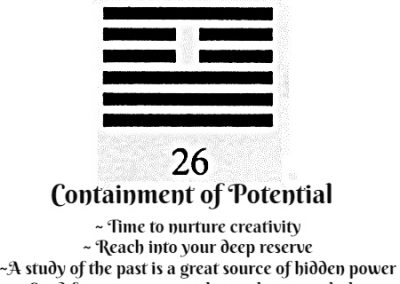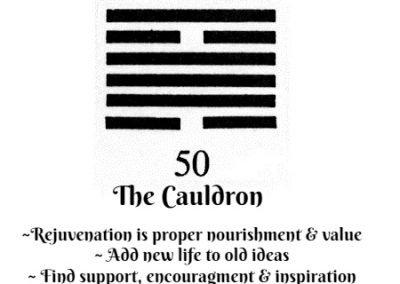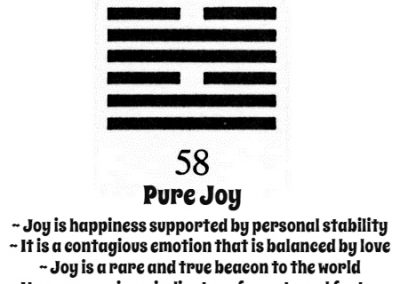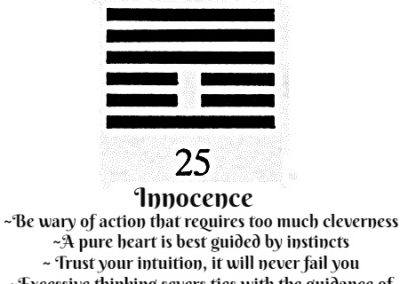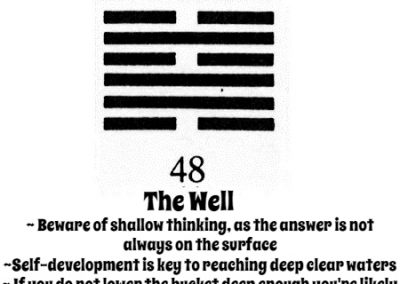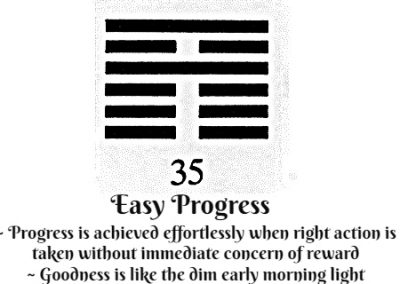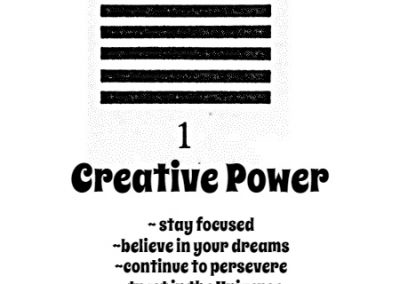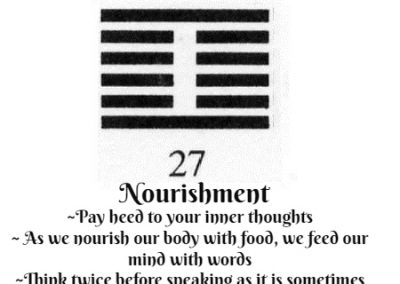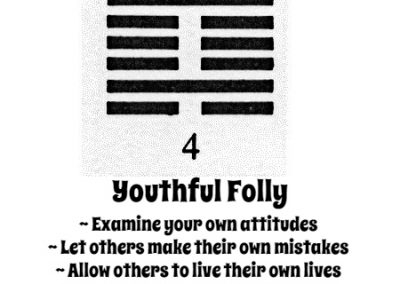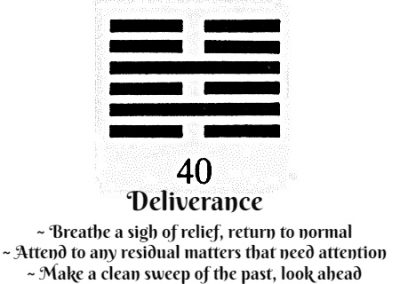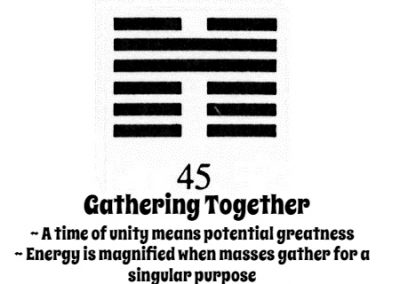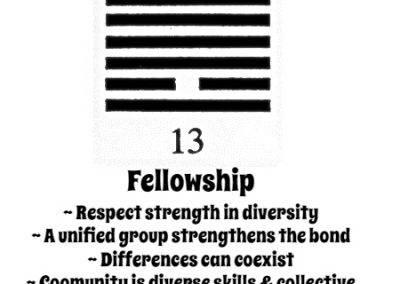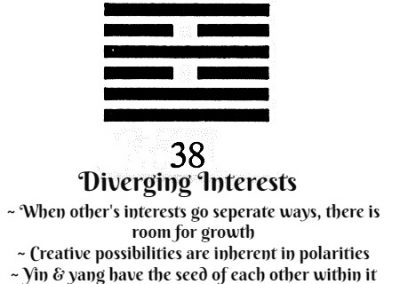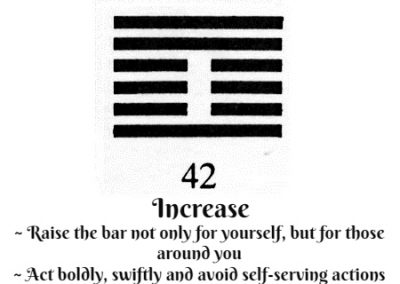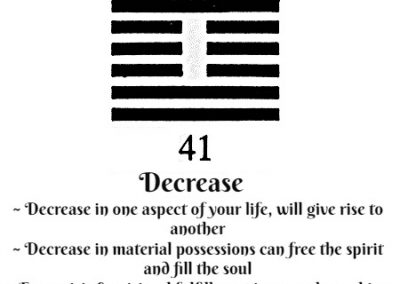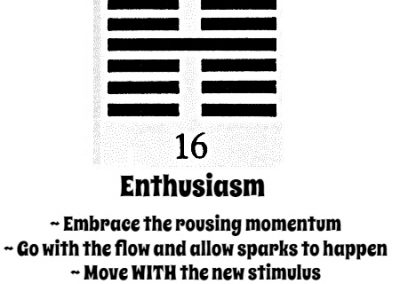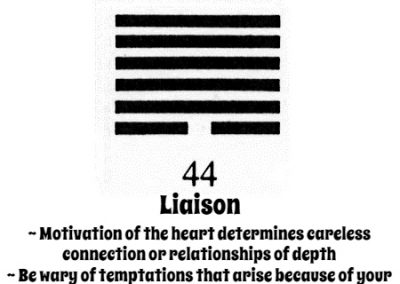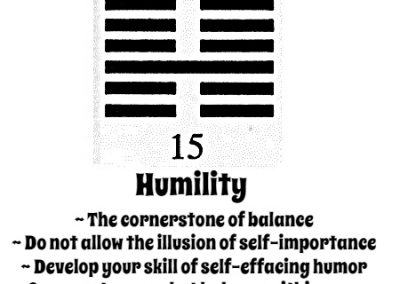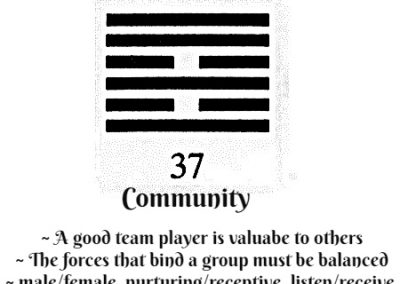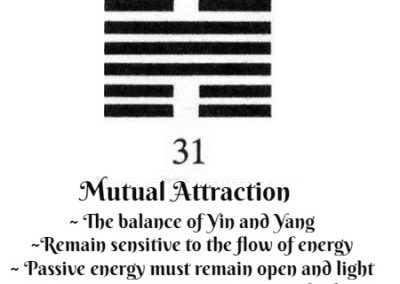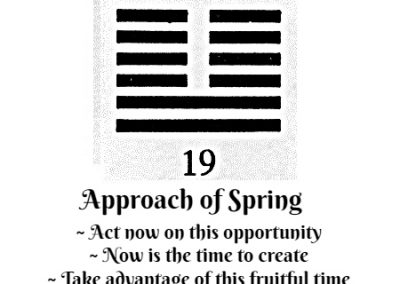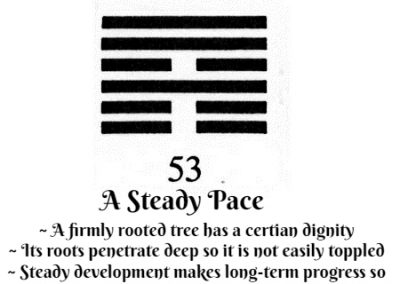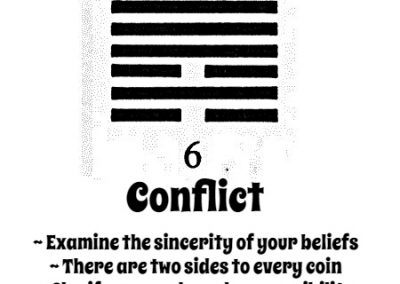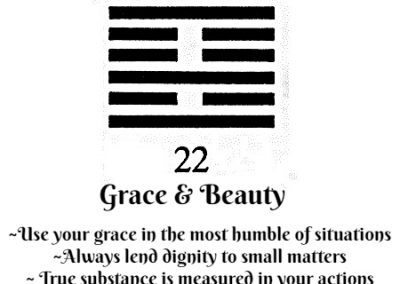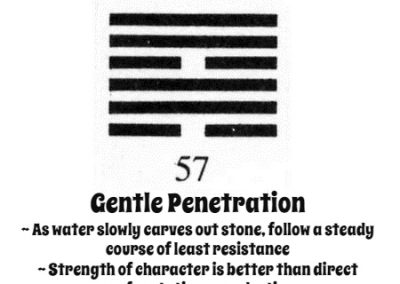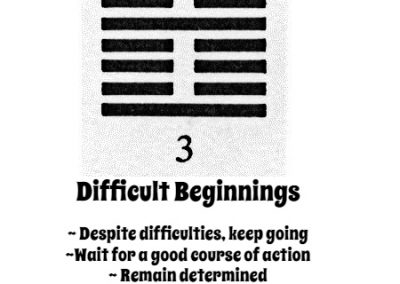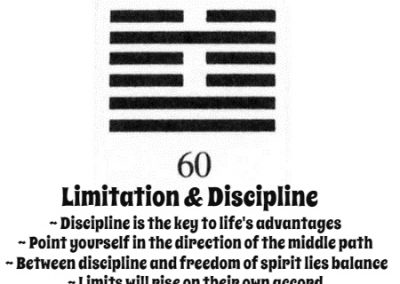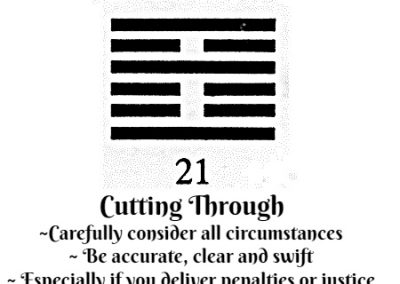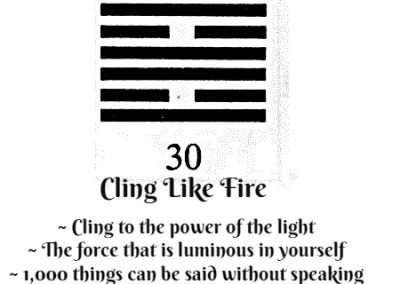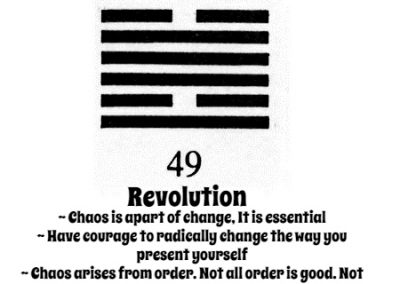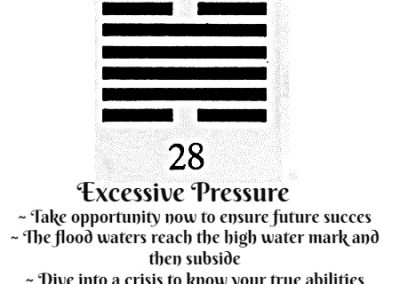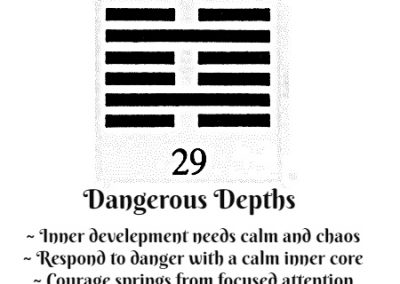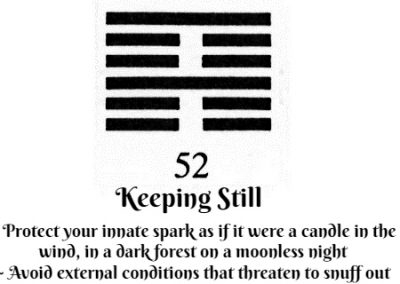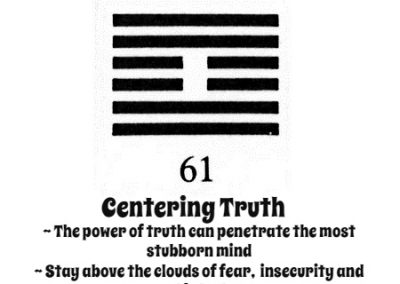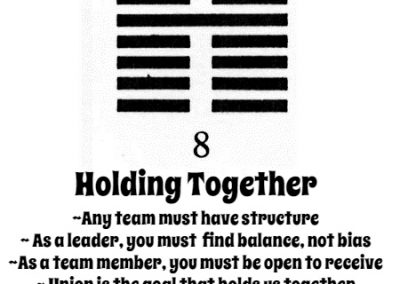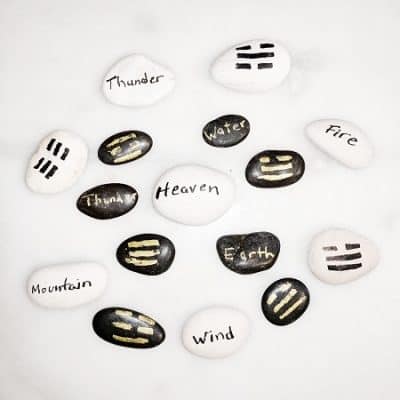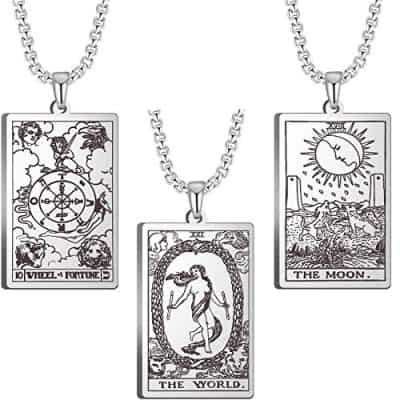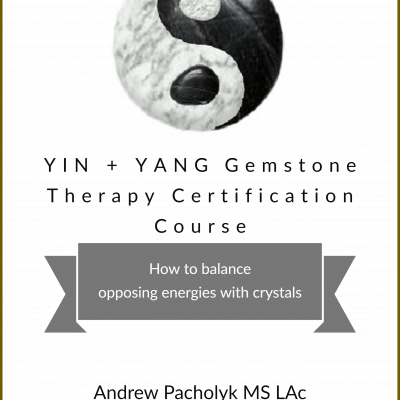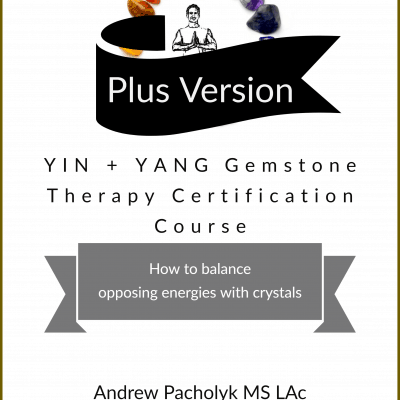Book of Changes
The I Ching or Yi Jing, also known as Classic of Changes or Book of Changes, is an ancient Chinese divination text and the oldest of the Chinese classics. The “changes” involved have been interpreted as the transformations of hexagrams, of their lines, or of the numbers obtained from the divination.
Possessing a history of more than two and a half millennia of commentary and interpretation, the I Ching is an influential text read throughout the world, providing inspiration to the worlds of religion, psychoanalysis, literature, and art. Originally a divination manual, it was transformed into a Cosmological text with a series of philosophical commentaries known as the “Ten Wings”.
After becoming part of the Five Classics in the 2nd century BC, the I Ching was the subject of scholarly commentary and the basis for divination practice for centuries across the Far East, and eventually took on an influential role in Western understanding of Eastern thought.
The I Ching uses a type of divination called cleromancy, which produces apparently random numbers. Numbers between 6 and 9 are turned into a hexagram, which can then be looked up in the I Ching book, arranged in an order known as the “King Wen sequence”.
The hexagram is a basic structure created by combining two trigrams together. There are 8 trigrams that are the basis of the entire Universe. This means that everything in our Universe can be assigned and understood by one of these trigrams This includes the Tao, Yin, Yang (which embody the cosmos) and the five elements (Wood, Fire, Earth, Metal, Water.) With 64 possible combinations, they bring the fundamental aspects of Chinese philosophy which provide a path to wisdom and perception. The hexagram, therefore are two trigrams stacked on top of each other.
Below are the interpretations of each of the 8 Trigrams:
The basic unit of the hexagram (卦 guà), is a figure composed of six stacked horizontal lines (爻 yáo). Each line is either broken or unbroken. The text of the I Ching contains all 64 possible hexagrams.
The hexagram, pictured above, represents the 2 trigams of Earth over Fire. This is hexagram 36 (Darkening of the Light)
The interpretation of the readings found in the I Ching are a matter of centuries of debate, and many commentators have used the book symbolically, often to provide guidance for moral decision making as informed by Taoism and Confucianism. The hexagrams themselves have often acquired cosmological significance and paralleled with many other traditional names for the processes of change such as yin and yang and Wu Xing.
Flipping the Coins
Before the appearance of coins, the IChing were written on pottery, yarrow sticks, bones or shells. These were tossed in a sequence in order to come up with a hexagram. When coins were produced in society, 3 coins were tossed (6 times) to represent each line in the 6 block symbol. To consult the I Ching, you would cast six lines, building a hexagram from the bottom up. With each coin representing a “Yin side” and the other “Yang side”, 3 coins were tossed.
The majority would determine if it was a:
This is then repeated 5 more times for a total of six tries, representing 6 lines. When looked at in total, you have created a “hexagram”. You can try this with 3 ordinary coins as well. For instance, heads could represent Yang, while tails could represent Yin.
When tossing the coins:
3 heads = yang
2 head + 1 tail = yang
2 tails + 1 head = yin
3 tails = yin
Interpreting The Parable
A parable is a succinct, didactic story, in prose or verse, that would illustrate one or more instructive lessons or principles. Each numbered grouping of tiles or hexagram would represent a lesson to be learned about the human condition. In the canonical I Ching, the hexagrams were arranged in an order dubbed the King Wen sequence after King Wen of Zhou, who founded the Zhou dynasty and supposedly reformed the method of interpretation.
Each hexagram interprets the way energy moves. It gives you an idea of what to expect from a situation and how to manage it. (The titles of the hexagrams provide the simplest answers – such as Retreating, Approaching, Gathering, Inner Truth, Waiting…)
Remember, based on the principles of yin and yang, Yin is always transforming into Yang and visa versa. They are also one within each other. As Yin reaches its peak, it eventually becomes Yang. As Yang reaches its peak, it eventually becomes Yin. Therefore, your situation is always evolving. It is up to you to understand the process and how to transform along with it.
The Principles of Yin and Yang are below:
Yin and yang are two words we frequently hear in connection with balance. Yin is generally thought of as being feminine, while yang is considered masculine, But there is much more to this. — Yin is also related to the earth, moon, darkness, shade, rest, space, west and north.
Yang on the other hand is related to light, sun, brightness, heaven, time, south, east and left. In ancient times when the daily cycle of night and day were noted, it was thought that day corresponded to yang and yin corresponded to night. Since one usually traveled and worked during the day, yang came to be associated with activity, while yin came to be associated with rest because at night, one rested.
Yin and Yang are looked at in four distinct ways.
Yin and Yang are in: Opposition: in relation/relative to each other.
Interdependent: you cannot have one without the other.
Mutual Consumption: control and balance one another.
Intertransformation: one transforms into the other at it’s Zenith.
–Yin and Yang exsist in everything in the Universe in relationship to each other. The duality of the universe and the world around us is expressed in this “Tai Chi,” symbol (often, mistakenly called the Yin/Yang symbol) a circle created by a light and a dark side, positioned end to end with one small circle of yin in yang and yang in yin. This is the presence of its complement. This has been accepted for several thousand years in Chinese philosophy, but the acknowledgment that every male has a feminine aspect, and every female has a male side, is new to the Western mind and medicine.
Together, yin and yang comprise a whole, and yet there is an element of each in the other. But sometimes we have too much yang, and other times, we have too much yin. It is up to us to find and maintain the balance between the two in our physical, mental, emotional, spiritual, sexual and intellectual selves. Achieving this balance helps us become grounded or centered.
Yin energy is considered feminine. Yin is very contracting, passive, languid, inward, and heavier. Unlike yang, yin is slow moving and contracts inward. Some common properties of yin include:
Earth
Moon
Darkness
Water
Space
Matter
Rest
Grows
Contraction
Flat
Descending
Below
West
North
Right
Female
Yang energy is considered masculine. Yang is very expanding, active, energetic, outward, and lighter. Unlike yin, yang is fast moving and expands outward. Some common properties of yang include:
Heaven
Sun
Light
Fire
Time
Energy
Activity
Generates
Expansion
Round
Rising
Above
East
South
Left
Male
The Five Element theory also plays a role in the interpretation of the IChing. Here you will discover the power of the 5 Elements:
Now’s the time…
Below, we have cast your IChing in a past/present/future foretelling. Or, take a look at the hexagrams and choose a number that calls to you. Click on the link and learn more about this revealing lesson. How about “tossing 3 coins” and divine your own message? Andrew has created a beautiful I Ching Divination Game that you will not only find fun, but is filled with wonderful “life lessons” to discover. Start your journey now!
We’ve Cast Your Hexagram
The 3 tile cast here, represent your past (1st position on the left), your present (2nd middle position) and your future (3rd position on the right) Below you will find the interpretation of each tile. (To recast your tiles, simply refresh the page). Click on each LINK under the tile to understand each position.
Recommended Products
-

Crystal Astrologer Course
$ 279.95 -

Crystal Reiki Course
$ 259.95 -

Crystal Reiki PLUS
$ 299.95 -
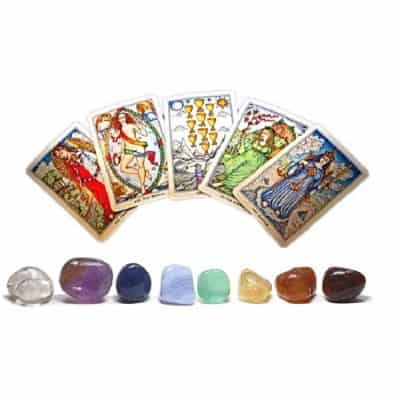
Crystal Tarot Set
$ 49.95 -
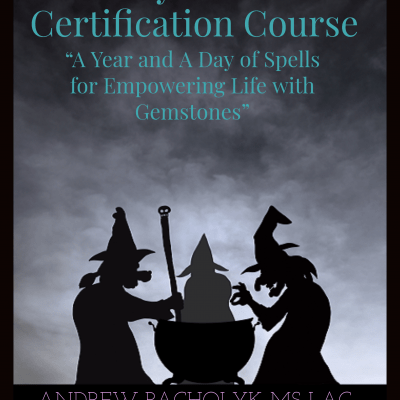
Crystal Witch Course
$ 279.95 -
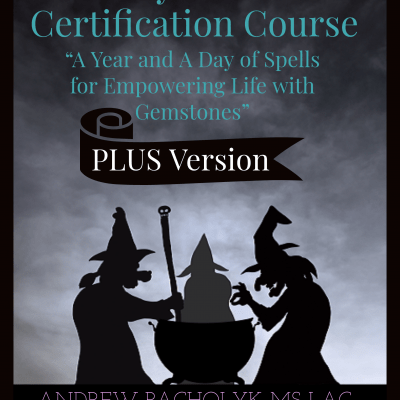
Crystal Witch PLUS Course
$ 299.95 -

Crystalline Angel Course
$ 279.95 -

IChing Incense Cones
$ 5.95 -
Sale!
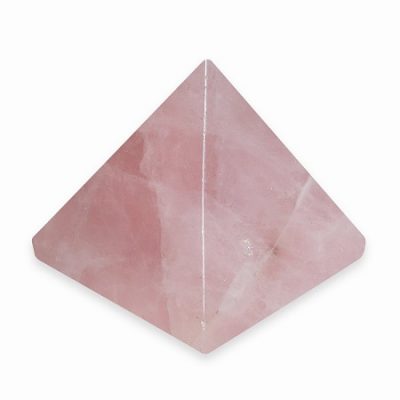
Rose Quartz Pyramid
Original price was: $ 44.00.$ 39.95Current price is: $ 39.95. -

Sun Tarot Oil
$ 13.95 -

Tao Te Ching Incense Sampler
$ 14.95 -

Tarot Card Bag
$ 4.95 -
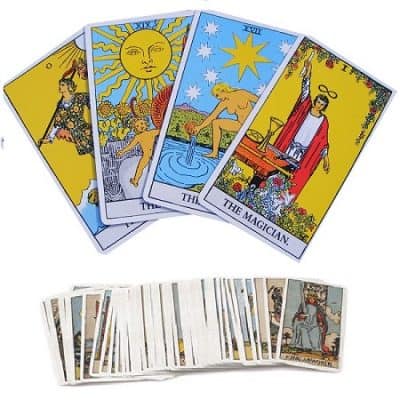
Tarot Card Set
$ 19.95 -
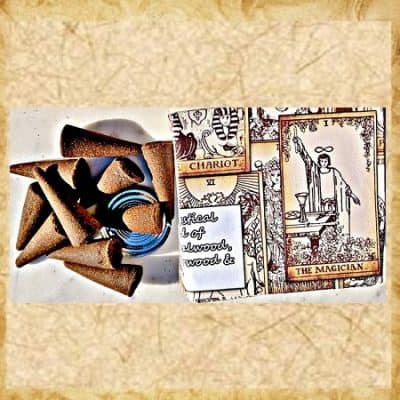
Tarot Incense Cones
$ 5.95 -

Tarot Reader’s Candle
$ 17.77 -
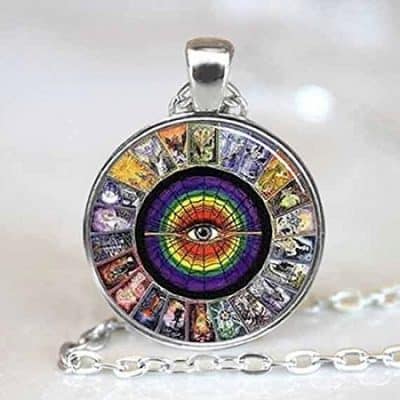
Tarot Wheel Pendant
$ 12.95
